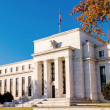Listen on The Move
In this episode of Insight is Capital, Pierre welcomes Dr. Todd Finkle, esteemed Pigott Professor of Entrepreneurship at Gonzaga University and author of 'Warren Buffett: Investor and Entrepreneur.' Dr. Finkle draws on nearly two decades of research and personal experiences and notably, his connection to the Buffett family (he shares his memories of friendship and hanging around at school with Buffett’s son, Pete, and his friendship with both he and Susie), of taking students to meet Warren Buffett in Omaha, to explore Buffett's investment philosophy, entrepreneurial spirit, and the lasting impact of Buffett's childhood during the Great Depression. The discussion highlights the influence of key figures like Charlie Munger and Phil Fisher in Buffett's life, the importance of critical thinking, and the value of surrounding oneself with supportive individuals. Dr. Finkle shares the challenges of writing his book and the invaluable lessons learned from Buffett's mistakes while providing unique insights about the importance to Buffett and Munger of avoiding toxic people and embracing continual, lifelong learning.
00:00 Introduction to Dr. Todd Finkle and His Unique Insights on Warren Buffett
01:31 Dr. Finkle's Personal Connection to Warren Buffett and family
02:49 Warren Buffett's Philosophy and Influence
07:08 Buffett's Humble and Positive Character
10:20 Family Ties and Early Life in Omaha
28:04 The Entrepreneurial Spirit of Young Warren Buffett
35:27 Dr. Finkle's Journey to Writing the Book
38:05 Meeting Warren Buffett: A Professor's Experience
41:33 Meeting Warren Buffett: A Life-Changing Experience
42:39 Exploring Omaha: The Heart of Buffett's Investments
44:27 Buffett's Investment Philosophy and Local Business Support
46:02 The Humble Life of Warren Buffett
56:40 Buffett's Mistakes and Lessons Learned
01:10:09 The Entrepreneurial Spirit of Warren Buffett
01:17:31 The Future of Berkshire Hathaway
01:24:10 The Importance of Critical Thinking and Entrepreneurship
01:25:59 Final Thoughts and Best Advice
Copyright © AdvisorAnalyst















